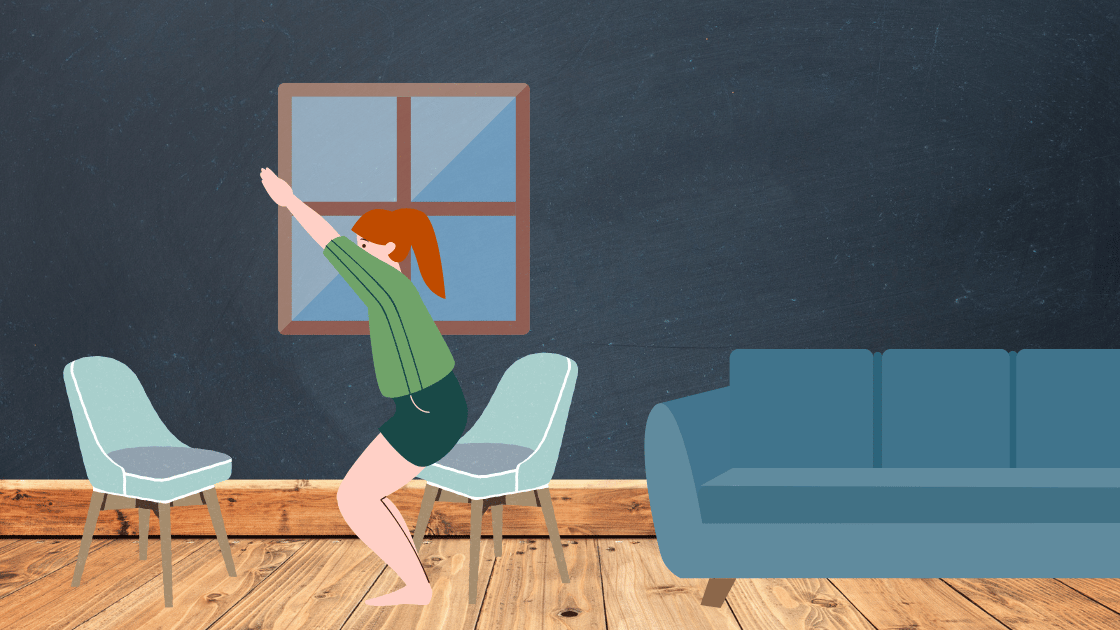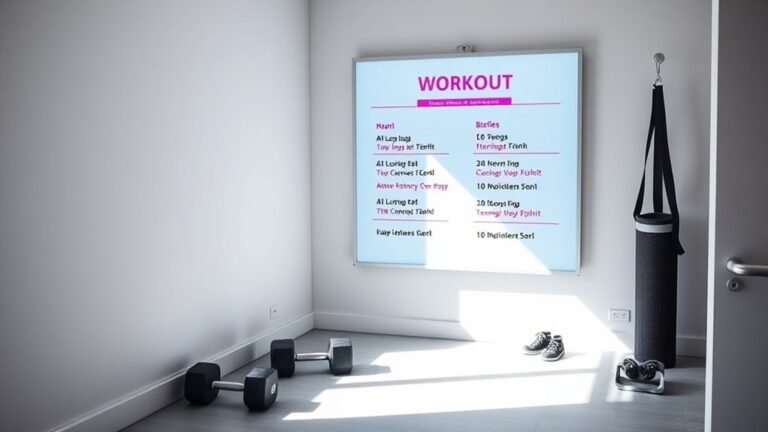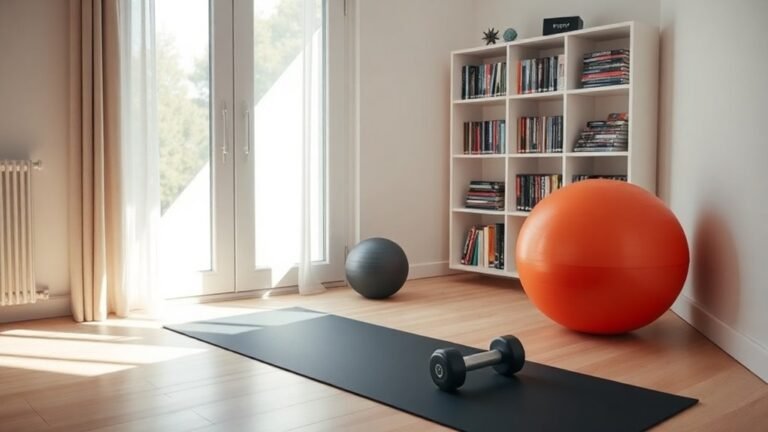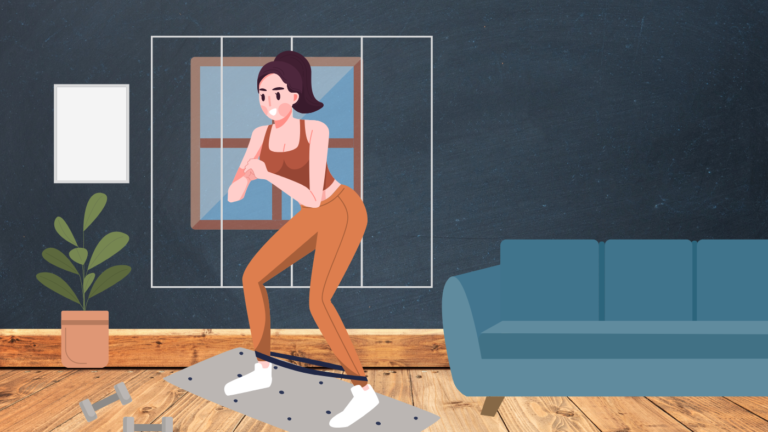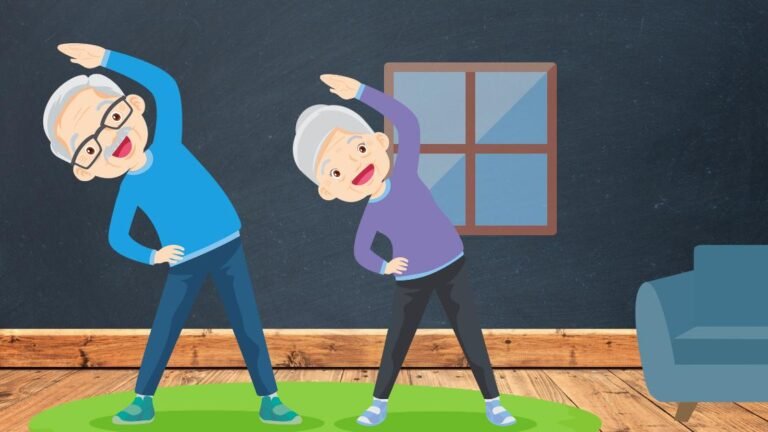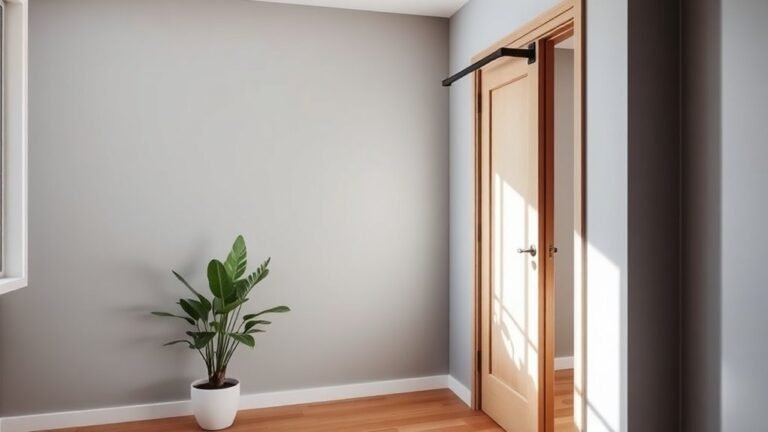The Ultimate Guide to Home Workouts Using a Chair: No Gym, No Problem
We recognize that not everyone enjoys the convenience of a fully furnished home gym. We’ll introduce you to a variety of chair-only at-home training concepts in this article.
You can maintain an efficient fitness regimen without a gym membership or expensive equipment by using the exercises shown below.
Chair: Your New Workout Friend
It’s critical to comprehend the possibilities of a chair as a workout gear before beginning the exercises. It’s a multipurpose piece of equipment that can help with a variety of workouts that target different muscle areas; it’s more than just a place to sit.
A chair could be a key component of a challenging and rewarding home workout routine that works your arms, back, core, and legs.
Shoulders and Arms Exercises in a Chair
You may get a complete arm and shoulder workout using chair-assisted workouts by working your biceps, triceps, deltoids, and other upper body muscles.
To get you started on your chair-assisted upper body training program, here are some exercises:
Chair Tricep dip
- Put your hands on either side of your hips while sitting on the edge of the chair.
- Legs extended in front of you as you raised your bottom off the seat.
- Bend your elbows to about a 90-degree angle to lower your body, then push yourself back up to the starting position.
Why it works: By concentrating on the triceps, the muscles at the rear of your upper arm, this exercise helps to define and tone this region.
Incline pushups
- Stand in a plank stance with your feet extended behind you and your hands on the chair’s seat.
- Maintaining a straight body, lower your chest towards the chair before pushing back up to the beginning position.
Why it works: Incline push-ups, which train your chest, arms, and shoulders, are a great upper-body exercise.
They are a less difficult variation of the standard push-up, making them appropriate for novices or people with weak muscles.
Chair-Assisted Plank Shoulder Taps
- Begin with your hands on the chair and your feet on the ground in an inclined plank position.
- Lift one hand off the chair and touch your opposite shoulder while maintaining a tight core.
- Then repeat with the other hand.
Why it works: While training your arms, shoulders, and core, this workout tests your balance and stability.
Seated Overhead Press
- Place a weight (or a filled water bottle if you don’t have any dumbbells) in each hand and sit up straight on the chair.
- Push the weights forward with your extended arms before bringing them back down at shoulder height.
Why it works: Although your triceps and upper back are also worked during this exercise, your shoulders are the primary muscle group that is largely worked.
Core Power: Chair Exercises for a Strong Midsection
To give your core a well-rounded workout, perform several exercises that target abdominal muscles while using a chair as support.
Let’s explore some thorough chair-assisted workouts that can aid in developing a strong core:
Seated Leg Lifts
- Straighten your back while seated on the edge of the chair.
- Stretch one leg out in front of you, using the chair’s sides as support.
- The leg should be raised as high as is comfortable, held for a brief while, and then brought back to the floor without contacting it. the other leg, and repeat.
Why it works: This exercise gives your lower abs the majority of the effort, but it also works your thighs, hip flexors, and lower back.
Chair Planks
- Extend your legs behind you and place your forearms on the chair’s seat.
- In order to imitate a plank posture on the floor, keep your body in a straight line from your head to your heels.
- For a short while, maintain this posture before relaxing.
Why it works: Chair planks exercise your lower back, obliques, and entire core. They are great full-body exercises because they also work your shoulders and legs.
Seated Russian Twists
- Place your feet off the ground, bend your knees, and sit on the edge of the chair.
- Twist your torso from side to side while holding your hands together in front of you, maintaining your spine straight.
Why it works: Russian twists performed while seated focus largely on the obliques, the muscles on either side of the abdomen.
They give you a thorough core workout by also working your lower back and hip flexors.
Seated Bicycle Crunches
- Put your hands behind your head as you recline in the chair.
- As you bring one leg towards your chest, rotate your torso so that the rising knee meets the opposing elbow.
- On the opposite side, repeat.
Why it works: By working your abs, obliques, and lower back, this workout is wonderful for your complete core.
These chair-assisted workouts can improve your overall physical performance, make your workout program more effective, and help you develop a strong midsection.
Keep in mind that maintaining good form and control is essential for the effectiveness and injury prevention of core exercises.
Legs and Glutes: the lower body
The chair is ideal for a variety of exercises that focus on the thighs, glutes, and calves due to its height and stability.
Let’s now go into specific chair-assisted exercises for building stronger legs and glutes:
Chair squat
- Place your feet hip-width apart as you stand in front of the chair.
- Your body should be lowered towards the chair with your knees bent, as if you were going to sit down.
- Push through your heels to get back up to your feet once your glutes have just barely touched the chair.
Why it works: Although chair squats also train the glutes and hamstrings, their primary muscle group is the quadriceps. Additionally, they promote appropriate form, which lowers the possibility of injury and increases efficiency.
Step-Ups
- Face the chair while standing.
- Put one foot on the seat and pull your body up by pressing with your heel.
- Join the chair by placing your other foot there as well.
- Reverse the process by descending one foot at a time.
Why it works: Step-ups are a great full-leg exercise that strengthens your calves, glutes, and quads. They also enhance coordination and balance.
Seated Leg Extensions
- Place your feet firmly on the ground while seated in the chair.
- Lift one leg up until it is parallel to your hip, hold for a second, and then bring it back down.
- Repeat with other leg.
Why it works: The quadriceps, or the muscles in front of your leg, are the focus of this exercise. It also enhances range of motion and flexibility.
Standing Glute Kickbacks
- Holding on to the chair’s back for stability, stand behind it.
- Keeping one leg straight, kick it back and then lower it again.
- Repeat with other leg.
Why it works: Kickbacks that target your glutes and hamstrings can tone and strengthen your lower back.
Safety Issues with Chair Exercises
Although a chair is a practical exercise item, safety must always come first. Use only a stable chair that is set on a non-slip surface. Before beginning each exercise, make sure the chair is stable.
Also, keep in mind that warming up before your workout and cooling down afterward are crucial precautions to take in order to avoid injuries.
The Advantages of Chair-Based Home Exercise
Chair-based exercises have a number of benefits:
Convenience: These workouts don’t require much room and can be performed anywhere, at any time.
Versatility: You can work out your entire body by using a chair to target different muscle groups.
Accessibility: This exercise program is appropriate for novices and people with limited mobility, broadening the reach of fitness.
Home workout plan using chair
Each day focuses on different muscle groups and includes five exercises, with a warm-up and cool-down routine to ensure you’re ready to tackle each workout safely and effectively.
Warm-Up Routine
Before you start each day’s exercises, a warm-up is vital to prepare your body and help avoid injury. Spend 5 to 10 minutes doing light cardio activities such as marching on the spot, arm circles, or leg swings. Incorporate some dynamic stretches targeting the muscle groups you will work on during that day’s session.
Cool-Down Routine
After your workout, a cool-down session helps bring your body back to its resting state and reduce muscle stiffness. Spend 5 to 10 minutes doing light cardio activities such as walking. Follow this with static stretches targeting the muscle groups you’ve worked on during your workout. Hold each stretch for 20 to 30 seconds.
Now, let’s move on to the weeklong workout plan:
Day 1: Arms and Shoulders
- Tricep Dips – 3 sets of 10 repetitions
- Incline Push-ups – 3 sets of 10 repetitions
- Chair-Assisted Plank Shoulder Taps – 3 sets of 10 repetitions
- Seated Overhead Press – 3 sets of 10 repetitions
- Arm Circles – 3 sets of 30 seconds
Day 2: Core
- Seated Leg Lifts – 3 sets of 10 repetitions
- Chair Planks – 3 sets of 30-second holds
- Seated Russian Twists – 3 sets of 15 repetitions
- Seated Bicycle Crunches – 3 sets of 10 repetitions
- Seated Knee Pull-ins – 3 sets of 10 repetitions
Day 3: Lower Body
- Chair Squats – 3 sets of 15 repetitions
- Step-Ups – 3 sets of 10 repetitions
- Seated Leg Extensions – 3 sets of 10 repetitions
- Standing Glute Kickbacks – 3 sets of 15 repetitions
- Seated Calf Raises – 3 sets of 15 repetitions
Day 4: Full Body
- Seated Overhead Press – 3 sets of 10 repetitions
- Chair Planks – 3 sets of 30-second holds
- Chair Squats – 3 sets of 15 repetitions
- Tricep Dips – 3 sets of 10 repetitions
- Seated Leg Lifts – 3 sets of 10 repetitions
Day 5: Active Rest
Take a break from intensive exercises. Instead, engage in light activities such as walking, stretching, or yoga to promote active recovery.
Day 6: Arms and Shoulders
Repeat Day 1 exercises, adjusting repetitions and sets as per your comfort and progress.
Day 7: Core and Lower Body
- Seated Russian Twists – 3 sets of 15 repetitions
- Step-Ups – 3 sets of 10 repetitions
- Seated Bicycle Crunches – 3 sets of 10 repetitions
- Standing Glute Kickbacks – 3 sets of 15 repetitions
- Chair Planks – 3 sets of 30-second holds
This workout plan provides a comprehensive approach to fitness, focusing on different muscle groups each day. Ensure you’re maintaining
Finally, a chair is a useful addition to your home exercise routine in addition to being a tool for sitting down. You can transform any chair into your own personal gym with a little imagination and effort, and you can start living a healthy lifestyle.

